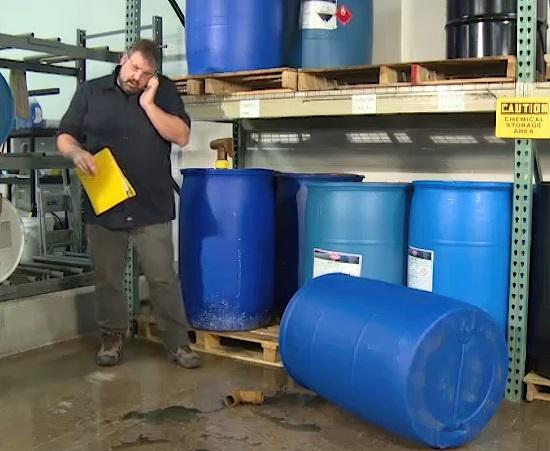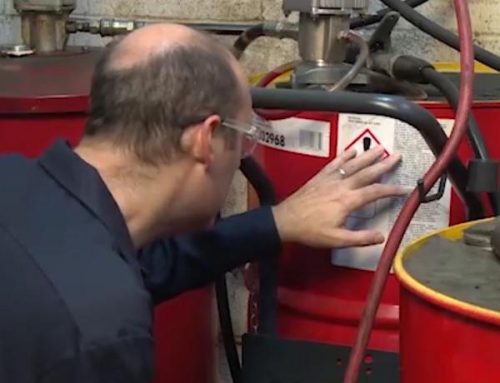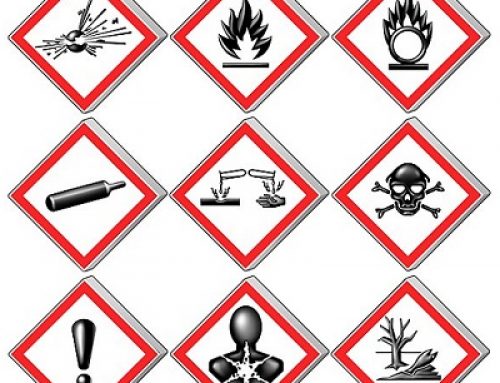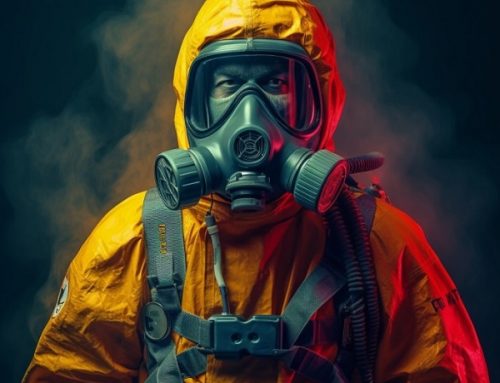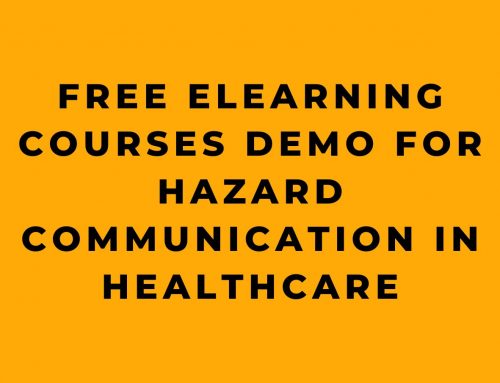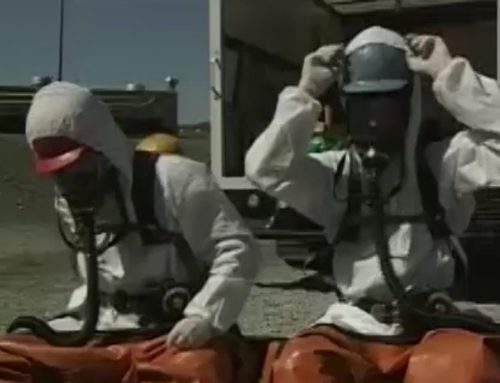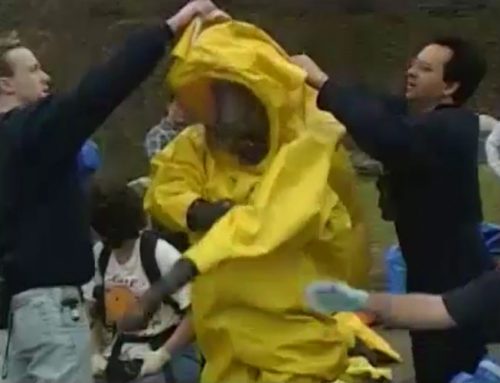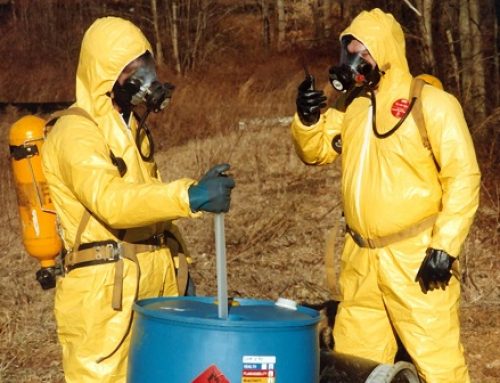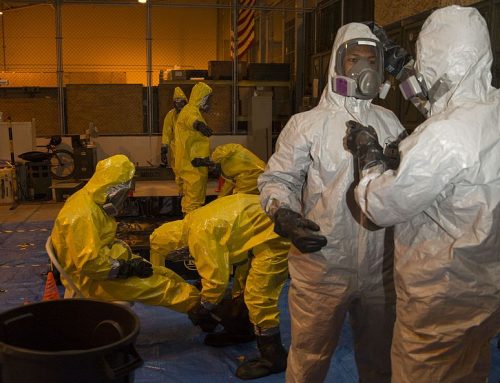A Hands-on Guide to Recognizing, Reporting and Responding to HAZMAT Incidents
Introduction
Hazardous materials (HAZMATs) are a part of many workplaces, from chemical plants to office buildings. While they are usually handled safely, accidents can happen. This article will teach you how to identify these substances in your workplace, understand proper spill response procedures, and clean up HAZMAT incidents while protecting yourself and others. The information is extracted from the training course “Dealing with Hazardous Spills,” part of the General Safety Series by Quality Safety and Health Products.
What are Hazardous Materials?
Hazardous materials are substances that can threaten human health and safety or damage the environment if they are not controlled properly. You encounter them everyday – gasoline, cleaning products, pesticides, and paints are common examples. At work, HAZMATs are necessary for some jobs but require careful handling and storage. Accidental releases can lead to injuries, environmental contamination, and property damage if not addressed quickly and effectively.
Your Company’s Hazard Communication Program
The first step is learning about the specific HAZMATs present in your workplace. The OSHA Hazard Communication Standard (29 CFR 1910.1200) requires all employers to have a written program that informs employees about hazardous chemicals they may be exposed to on the job. This includes:
- A list of all hazardous materials present.
- Details on chemical hazards (flammability, toxicity, etc.)
- An explanation of labeling systems used to identify HAZMATs.
- Safety Data Sheets (SDSs) for every hazardous chemical on site.
- Training workers on SDS information and proper chemical handling.
The Hazard Communication Program will tell you what HAZMATs are in your workplace and how to work with them safely. Familiarize yourself with it.
Reading Labels and SDSs
Part of your training will be learning to read HAZMAT labels and SDSs. Labels use words, symbols, and pictograms to quickly communicate a chemical’s hazards and precautions. SDSs provide more detailed physical, health, and environmental data. Required sections cover:
- Product identification – Handling and storage
- Hazards identification – Exposure controls/PPE
- Composition – Physical properties
- First aid measures – Chemical stability and reactivity
- Firefighting measures – Disposal considerations
- Accidental release measures – Transport information
Consult SDSs to learn about PPE needed, safe handling tips, first aid, spill management, and disposal for the HAZMATs you work with. Report unclear or missing labels and SDSs to your supervisor. Proper chemical information is vital for safety.
The Emergency Action Plan
In addition to the Hazard Communication Program, your employer must also have a written Emergency Action Plan tailored to your workplace. It outlines emergency procedures including:
- Reporting spills and other incidents
- Communications systems and alarm types
- Evacuation routes and meeting locations
- Procedures to account for all employees
- Rescue and medical duties
- Decontamination and waste disposal
- Required PPE and its use
Make sure you know the plan’s details, your individual role, and the location of spill kits before an accident occurs. Advanced preparation is key for an effective response.
Your Spill Response Role
OSHA categorizes HAZMAT spill response into five levels so duties can be assigned by training. When an incident occurs, the response forms around these roles:
Incident Commander – The “captain” who leads the spill response. They have advanced knowledge of emergency procedures, decontamination, safety regulations, and medical risks. The Incident Commander is responsible for the safety of everyone involved.
First Responder Awareness Level – Anyone who discovers a spill falls under this level. Their role is to quickly alert others and restrict access. All employees should know how to recognize and report HAZMAT releases.
First Responder Operations Level – These individuals secure the area by evacuating personnel, controlling vapors, and preventing further spread of the spill. They report conditions to the Incident Commander.
Hazardous Materials Technician – Technicians assess the spill’s properties, characteristics, risks, and extent. They select containment tools and materials, decide if evacuation is needed, and report their findings to the Incident Commander.
Hazardous Materials Specialist – As advanced experts, Specialists advise on specialized control methods, decontamination, coordinating outside agencies, and disposing of waste. They also manage multi-chemical releases.
Remember that these levels involve functions, not job titles. Workers with different positions could have the same spill duties based on training. Know your expected spill response role before an emergency.
Spill Response Procedures
When a HAZMAT spill occurs, follow these general response steps:
- The Awareness-level First Responder alerts others about the release.
- The Incident Commander takes charge of the response and oversees operations.
- The Operations-level Responder secures the area by blocking points of entry and ventilating indoor spills.
- They “dike” the spill to prevent spreading using absorbents like socks or barriers. Storm drains are blocked.
- The Hazardous Materials Technician “characterizes” the scene using instruments to identify chemicals.
- They report findings to the Incident Commander and confer about cleanup options.
- The Technician places sorbent materials and blankets over the spill to soak it up.
- Decontamination, waste disposal, and other final steps are completed.
Special Hazards
Flammability and electricity pose added risks when cleaning HAZMAT spills:
- Use non-sparking tools when handling flammable spills. Plastic shovels reduce fire hazards.
- Eliminate ignition sources. Shut off power to nearby electrical equipment and lock out breakers.
- Most liquids conduct electricity. Avoid shock hazards when spills contact wiring.
Decontamination and Disposal
After a spill, everyone and everything on site must be decontaminated:
- Workers pass through a Contamination Reduction Corridor (CRC) with multiple cleaning stations.
- Personnel and equipment are thoroughly washed down using decontamination solutions. Just water is inadequate for most chemicals.
- Contaminated rinse water and spill materials are collected for proper disposal.
- Only facilities approved by the EPA can accept hazardous waste from spills. Materials must be transported accordingly.
Proper decontamination and waste disposal prevents further spread of hazardous substances. Don’t cut corners on these vital steps.
Conclusion
HAZMAT spills can occur in any workplace, despite precautions. But the harm they cause can be minimized when personnel are trained and prepared. Know the HAZMATs in your facility, your expected emergency role, spill response procedures, and how to safely clean up incidents. Follow your employer’s Emergency Action Plan and use SDSs for guidance. With the proper education and tools, HAZMAT spills can be managed safely and responsibly.
You’ve just taken a comprehensive look at the importance of understanding, preparing for, and responding to hazardous material spills in your workplace. From the intricacies of your company’s Hazard Communication Program to your role in a spill response, it’s evident that knowledge is not just power but a critical factor in ensuring safety. Now that you’re armed with this vital information, you may be wondering how to take your preparedness to the next level. The answer lies in specialized training that fits the unique needs of your workplace while giving you and your team the confidence to act quickly and efficiently in crisis situations. This is where Our full-length interactive courses on “Dealing with Hazardous Spills” become a game-changer.
Unlock Peace of Mind in Your Workplace: Our Full-Length Interactive Courses Equip Your Team to Tackle Hazardous Spills Head-On!
Confidently Navigate the Unexpected with Comprehensive, Expert-Led Training – Available in Both English and Spanish.
You’re responsible for your team’s safety and your company’s reputation. We get it. When hazardous materials are involved, even a small oversight can lead to disaster. That’s where Our full-length interactive courses come in.
With Our in-depth courses, your team will be prepared, not scared. Our curriculum covers everything you need to know:
- A complete Hazard Communication Plan
- An Emergency Response Plan you can actually use
- In-depth knowledge of OSHA’s HAZMAT five levels
- Initial spill response protocols
- Techniques for spill containment
- Instruments for identifying involved chemicals
- Recognizing additional hazards at spill sites
Imagine a workspace where every team member is a confident first responder in the event of a hazardous spill. No panic, no chaos—just a well-coordinated effort that neutralizes danger and restores safety. That’s what Our full-length interactive courses deliver.
Don’t let unpreparedness define your organization’s legacy. Choose Our full-length interactive courses and elevate your team’s ability to handle hazardous spills. Courses are available in both English and Spanish, making it accessible for your diverse workforce.
Get started today and create a safer, more competent workplace that you can be proud of.


